Gone are the days of one-size-fits-all customer service. Your business is now part of a transformative era where personalising customer experience is the key to standing out.
Imagine creating customer moments that feel more like catching up with an old friend than just another transaction. That’s the heart of personalised customer service; it’s about crafting those unique, memorable moments that make your customers always feel seen and valued.
Simply put, customer service personalisation is the secret to forging real connections with your customers and building loyalty that endures.
Customer communications is what imail comms excels at doing, and in this guide, we will provide you with the best ways to personalise your own client communications, so let’s get into it!
Getting to Know Your Customers Inside Out
The foundation of any successful communication strategy is truly understanding your customers. It’s about gathering bits and pieces of their preferences, history, and past interactions with your brand to form a complete picture of the desired customer journey.
Factors to Consider
Purchase history provides genuine insight into the preferences of your customers, what they love, and what might catch their eye next.
Past Interactions tell the story of your customers’ journey with your brand, highlighting moments of delight or negative incidents, and creating opportunities for improvement.
Feedback is the voice of your customers, directly telling you what they cherish, and what could make their customer experience even better.
Demographics: Reveal age, gender, location, and occupation, which open windows to the worlds of your customers and help you tailor messages that echo their lifestyle and cultural nuances.
Browsing Behaviour: Analyses the pages they linger on and what they click. This reveals your clients’ unspoken preferences and guides you to create irresistibly relevant content and personalised experiences.
Social Media Engagement: Metrics such as likes, comments, and shares on social media offer a peek into your customer’s inner thoughts, showing you how to craft relatable content that leads to their genuine engagement.
Customer Loyalty: Purchase frequency and advocacy efforts like referrals to potential customers shine a light on your brand’s champion and guide you toward establishing reward-based communication with this particular customer.
Customer Life Stage: helps you understand whether your customers are students, parents, or retirees, which allows you to relay messages that speak directly to their current life challenges and joys.
Device Usage: allows you to discover if your customers are mobile mavens or desktop devotees, and helps you design customer interactions that fit seamlessly into their digital lifestyle.
Personal Interests: Hobbies and passions from survey responses or social media aid you in transforming generic messages into engaging conversations that resonate deeply with what your customers feel.
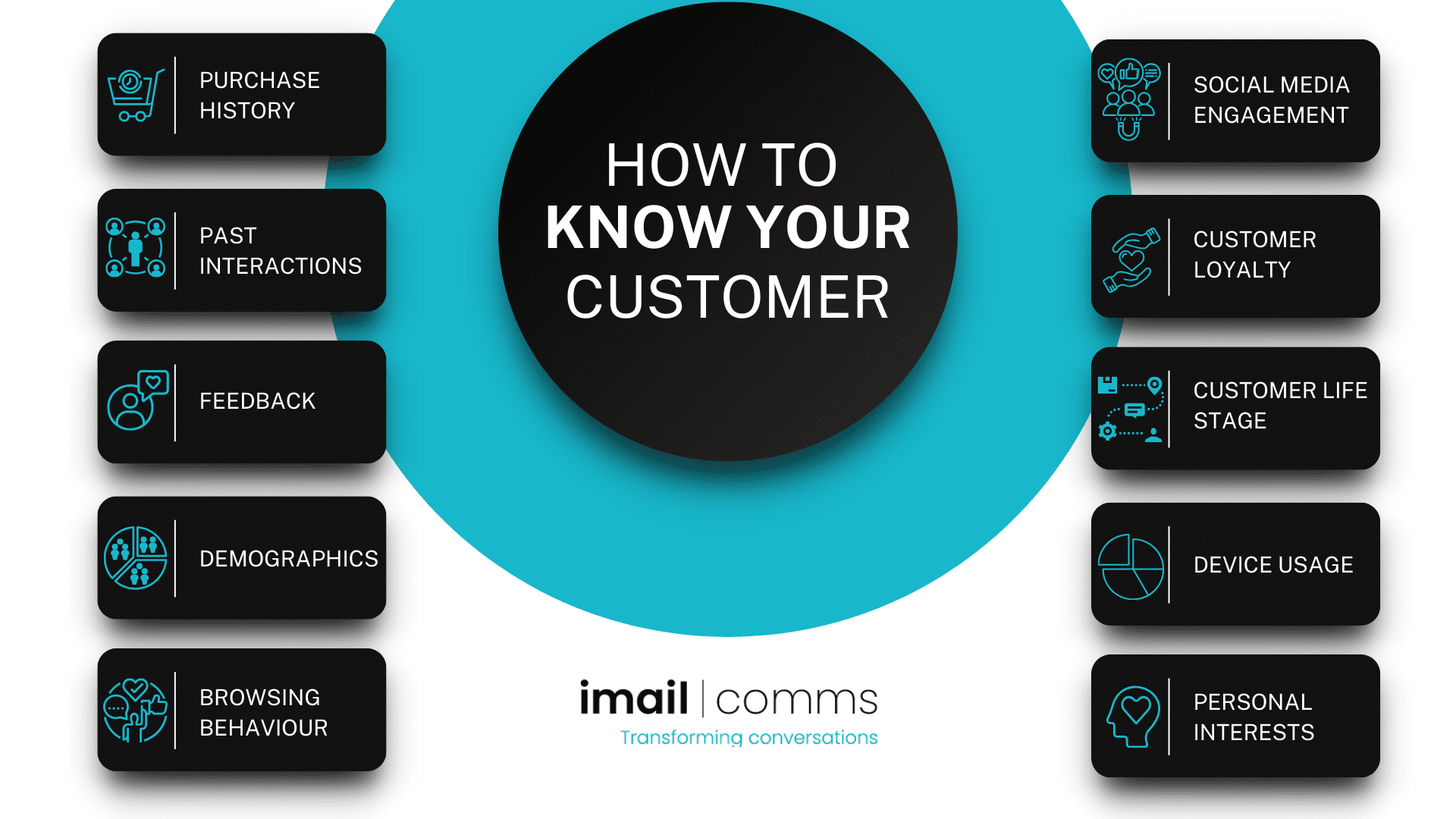
The Blueprint to Personalised Conversations
Bringing a personalised customer communication service to life involves a dance of business strategy and technology. Let’s choreograph this dance for the sake of the ultimate customer experience.
Gather and Unify Customer Data
The initial step for businesses should always be collecting customer insights from multiple touchpoints and bringing them together, as customer data is the backbone of personalised communication.
Use our ‘getting to know your customers inside out’ tips above as a roadmap that ends in you truly knowing your customer. By gathering information from various sources such as past purchases, interactions with your website, online channel engagement, customer feedback, and other channels, you create a comprehensive understanding of each individual customer and cultivate impactful customer experiences.
Segment Your Roadmap
Now, imagine dividing the roadmap into smaller, detailed stop. Each stop represents a group of customers with shared traits.
Segmentation allows you to group customers based on specific criteria such as demographics, purchase behaviour, preferences, and engagement level. By segmenting your customer base, you can create targeted communication strategies tailored to the unique needs and interests of each group.
This approach enables you to deliver more relevant and personalised messages, in an organised and timely manner as well, increasing the likelihood of engagement and conversion into leads and sales.
Let Technology Be Your Compass
The data collection part is complete. Now what?
Advanced analytics and machine learning algorithms empower businesses to make sense of vast amounts of customer data quickly and efficiently. These technologies can identify patterns, trends, and correlations within the data, enabling companies to understand customer behaviour and preferences on a deeper level.
Feedback Loops
A company should view feedback service as a key factor in successful heartfelt communications, similar to having a heart-to-heart with its customers. Direct and immediate support service is becoming increasingly popular because it tells you exactly what your customers love, what’s not hitting the mark, and how you can make their experience feel like it’s crafted just for them.
When you tune into their feedback, you’re not just guessing what makes your customers come back for more, you’re letting them co-design their journey with you. It’s all about making them feel heard and turning their input into actions that make their next customer engagement even more special.
After all, a personalised customer experience service is all about making each customer feel like the star of the show, and feedback is a backstage pass to making that happen for your company.
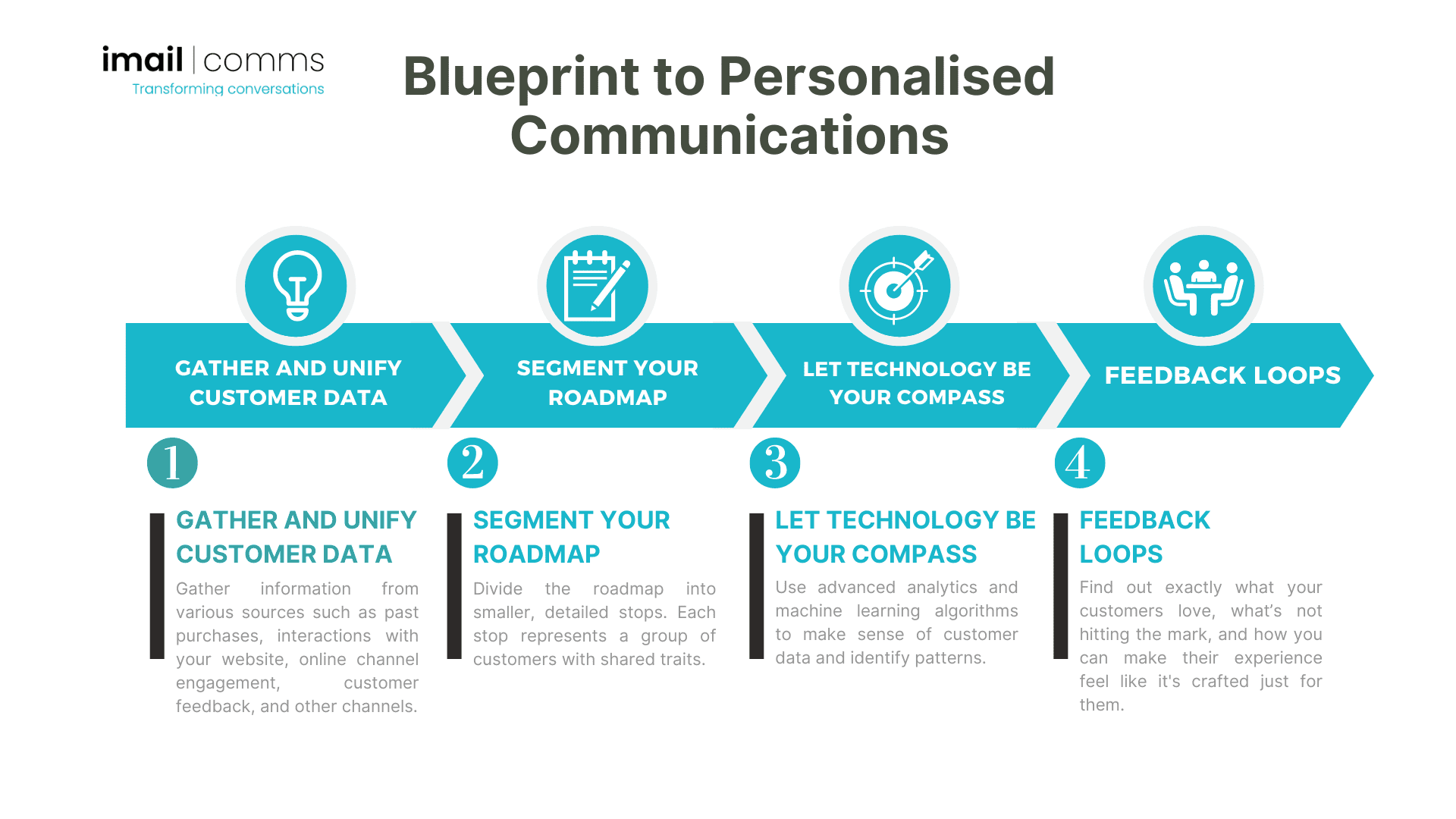
Customer Relationship Management: Listening and Adapting
Customer service is all about listening—really listening—to what your customers are saying, and using that insight to make things better. It makes sense to think of it as having a conversation with your clients that never ends, where every piece of feedback is a chance to level up your game.
Why is Customer Service Support Important?
A personalised customer service strategy is a pivotal tool to make your loyal customers mindful of essentially why they are committed to your company. By actively soliciting and listening to feedback, you demonstrate that you value your customer’s opinions and are committed to meeting their needs, cultivating optimised customer experiences.
Remember, when you grow with your customers, they notice—and they stick around.
Who is Responsible for Implementing your Customer Service Strategy?
Effective customer service communication is a two-way street. Companies must listen to what their customers expect and to their feedback on their brand, whether it’s through direct phone calls, surveys, in-app messaging, or online interactions.
A dedicated customer service team should be an integral component of any company that strives to excel in its communications and marketing campaigns. This customer service team would concentrate on actively engaging with customers and offering custom solutions with a personal touch, significantly enhancing the overall customer journey. Customer service agents should always be on the lookout across multiple channels, providing prompt responses when a customer reaches out.
Tip: Most consumers feel more comfortable with ongoing customer service communications if approached with a human touch of understanding and a casual tone that ensures friendliness and trust.
Feedback Collected, What is The Next Step?
With the insights provided by customer service agents, companies can leverage customer data and utilise this negative or positive feedback to refine and adapt their communication strategies, ensuring they remain relevant, effective, and impactful over time.
Think of this continuous feedback loop service as having a conversation with the market itself, where every response guides your next step. Positive feedback amplifies what your company is doing right, giving you the confidence to push boundaries, innovate further, and attract more business. Negative feedback? That’s your cue to pivot, refine, and sometimes, reinvent, ensuring that your communications not only resonate but also reflect the evolving needs and desires of your customers.
Related: What is CRM?
Privacy and Security: Balancing Customisation with Trust
In the subtle interplay between personalisation and privacy, many businesses face the challenge of delivering a customised experience service without overstepping boundaries.
This section explores how companies can navigate this tightrope by employing transparent data practices, obtaining explicit consent, and offering a personalised service that respects client preferences and privacy. It emphasises the importance of building trust through open communication about data use, allowing customers control over their information.
Remember, as privacy concerns have been at the forefront of consumers’ minds for the past decade, achieving this balance is not just beneficial; it’s crucial for fostering long-term customer relationships and creating a base of loyal customers.
To effectively balance privacy and personalisation, your business can adopt several strategies that ensure they respect their customers’ data while providing tailored experiences. Here’s how:
Transparent Data Practices
- Clear Communication: Clearly explain how you collect, use, and store customer information through easy-to-understand privacy policies.
- Customer Consent: Always seek explicit consent before collecting personal information, and provide options for customers to opt-in or out.
Respecting Customer Preferences
- Preference Management: Allow customers to control what information they share and how it’s used for the service of personalised offers.
- Customisation Options: Offer customers the ability to customise their experience to their liking, including the level of personalisation they’re comfortable with and the custom products they desire.
Secure Data Handling
- Robust Data Security: Implement strong security measures to protect customer data from unauthorised access or breaches.
- Data Minimisation: Collect only the information necessary for personalisation, reducing the risk and impact of potential privacy issues.
Value Exchange
- Demonstrate Benefits: Clearly show customers the value of the service they get in exchange for their data, such as improved product recommendations or exclusive offers.
- Build Trust: Use personalised experiences to build trust over time, showing customers that their sensitive information is used to genuinely enhance their experience.
Technology and Tools
- Privacy-Enhancing Technologies (PETs): Utilise tools that minimize the personal data required for personalisation, such as data anonymisation and encryption.
- AI and Machine Learning: Leverage AI to analyse behaviour and preferences without compromising individual identities.
Feedback and Adaptation
- Customer Feedback: Regularly solicit a feedback service about privacy and personalisation preferences, adapting strategies based on customer input and your business goals.
- Continuous Improvement: Stay updated with privacy laws and customer expectations, continually improving practices to maintain a balance between personalisation service and privacy.
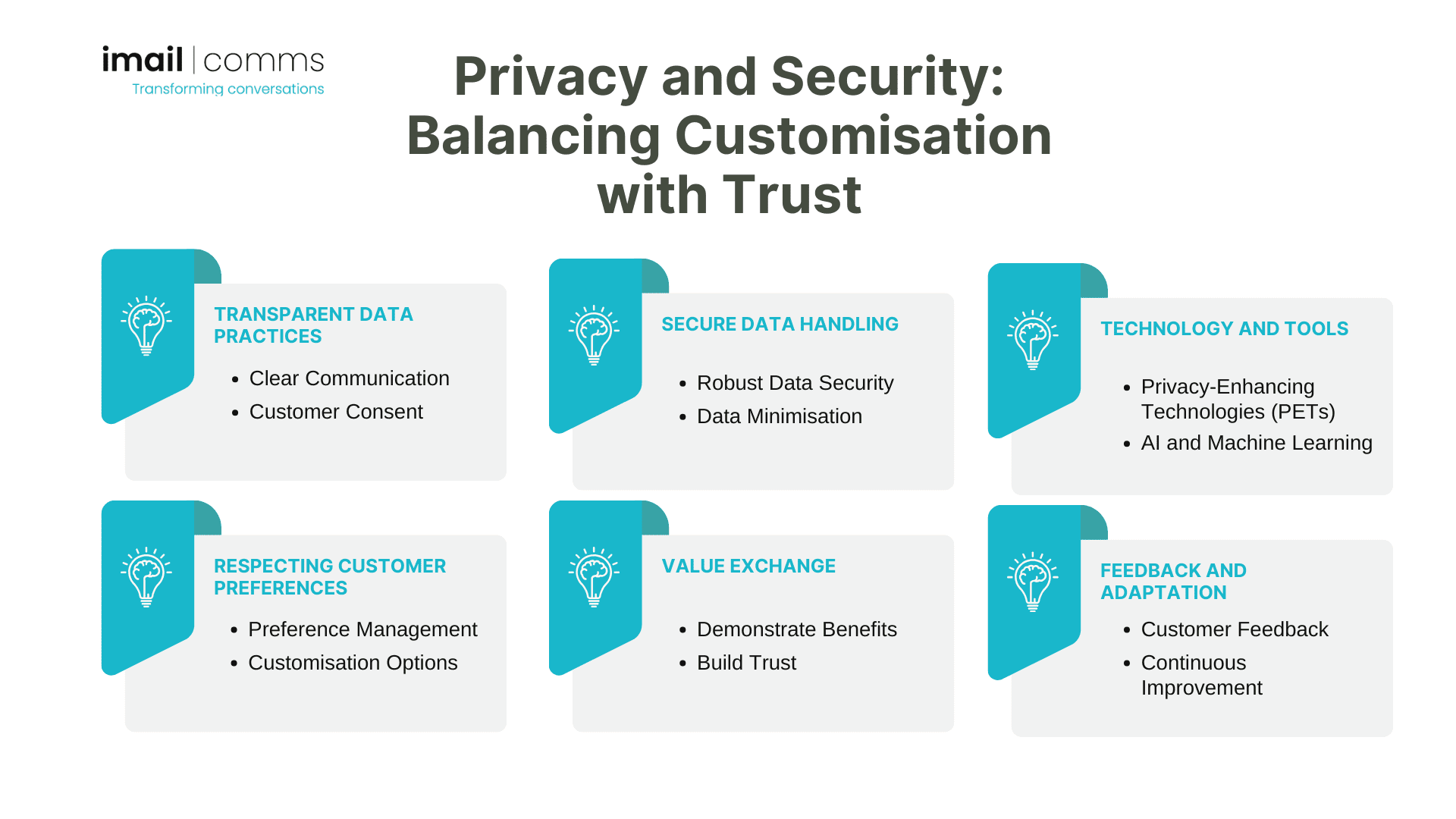
The Impact of Personalised Communications
When businesses start communicating in a way that feels personal and genuine, the impact is profound and is accompanied by major benefits.
Deeper Connections
Customised communication service demonstrates to customers that your business recognises their individuality and understands their unique needs and preferences. By tailoring your messages and interactions to resonate with each individual customer personally, you create a deeper emotional bond that goes beyond mere transactions.
Loyalty That Lasts
When customers receive personalised communications that speak directly to their interests and preferences, they are more likely to develop a sense of trust and loyalty towards your brand. Over time, a loyal customer becomes an advocate for your brand, sharing positive experiences with others and contributing to organic growth and customer acquisition.
A Symphony of Engagement
Personalised communications capture the attention and interest of customers more effectively than generic messages. When customers receive communications that feel relevant and tailored to their needs, they are more likely to engage with the service offered, whether by opening an email, clicking on a link, or responding to a call to action.
Enhanced Customer Satisfaction
A personalised experience addresses customers’ specific needs and concerns, leading to higher levels of satisfaction. Customers expect to receive communications that are relevant to their interests and preferences, they are more likely to feel satisfied with their interactions with your company.
Personalisation demonstrates that companies value and understand the needs of individual customers. Satisfied customers are more likely to remain loyal to your brand, make repeat purchases, and recommend a product or service to others, contributing to brand loyalty and long-term business success.
In conclusion, embracing personalised communications through CCM is not just a strategy; it’s a transformative approach to building meaningful connections with your customers. By leveraging client data, nurturing genuine interactions, and prioritising transparency and trust, businesses can unlock the full potential of long-term success and substantially increased revenue.
Remember, imail comms can be the ultimate partner for your smart communications needs, as we consistently shine in the domain of customer interactions and genuine engagement.
Our commitment to incorporating distinctive creative solutions that lead the market has never been more fortified, with our new imail 2.0 system that embodies this spirit of innovation. Don’t hesitate, and make sure you’re on our waiting list for this groundbreaking Customer Communication Management software.
Frequently Asked Questions (FAQ’s)
Here are the answers people want when they search for how to personalise customer communications.
Why is personalised communication important for my business?
Personalised communications allow you to build deeper connections with your customers by showing them that you understand their individual needs and preferences. This leads to increased customer loyalty, higher engagement levels, and ultimately, greater business success.
How can I ensure that my personalised communications respect customer privacy?
Respecting customer privacy is paramount in customised communication. By being transparent about how you collect and use customer data, and by giving customers control over their privacy settings, you can build trust and confidence in your brand.
Is customer-customised communication worth the investment of time and resources?
Absolutely. While personalising communication may require initial investment in terms of time, resources, and technology, the long-term benefits far outweigh the costs. By fostering stronger customer relationships, increasing loyalty, and driving engagement, you can significantly impact your bottom line and contribute to sustainable business growth.

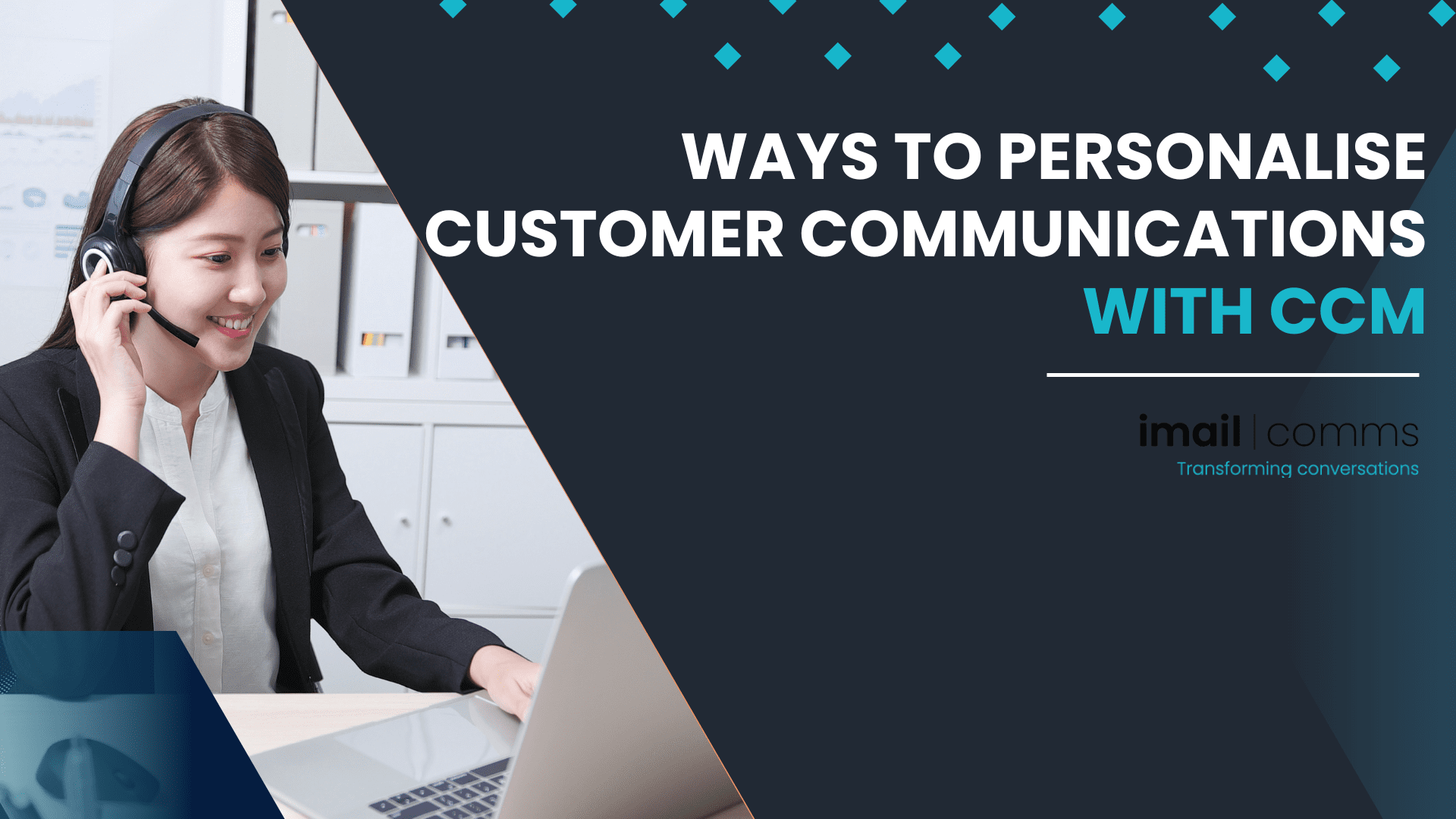
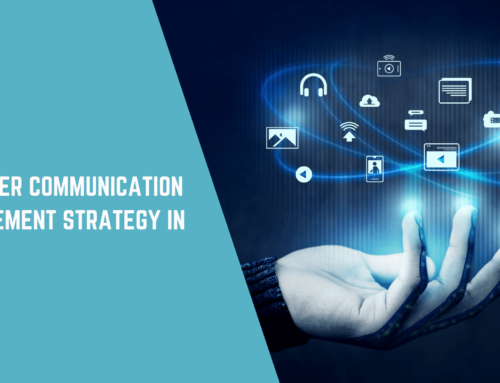
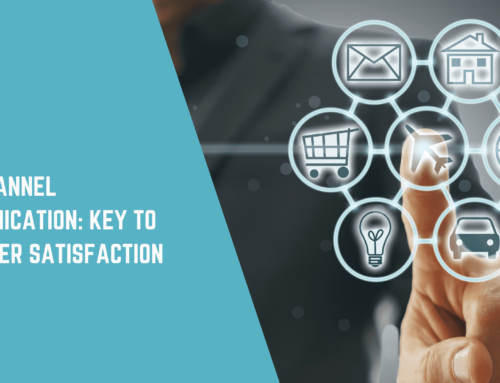
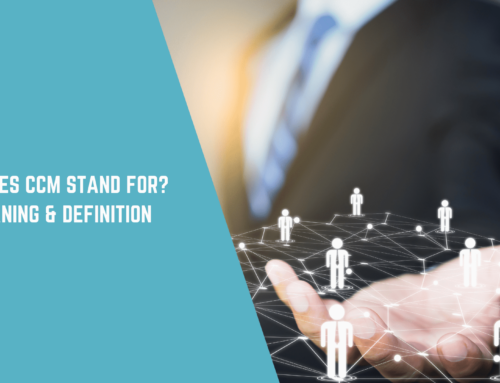
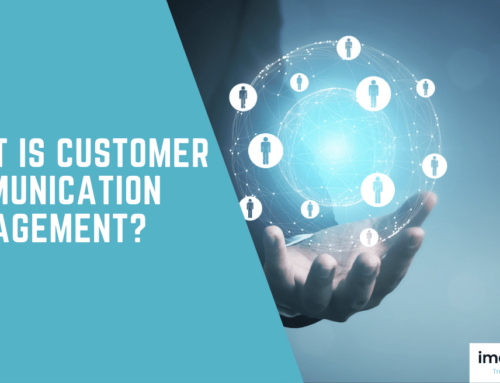
Leave A Comment
You must be logged in to post a comment.